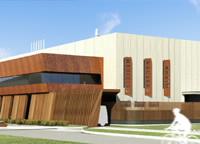

Published on the 7th June 2015 by ANSTO Staff
Scientists at Australia’s nuclear agency estimate they just produced their four millionth dose of nuclear medicine for domestic use.*
ABC News
From laboratories at ANSTO in Sydney, nuclear medicine is manufactured and distributed around the country and, when needed, the world.
You’d think the bigger logistics challenge with the task would be dealing with radioactive material, but the opposite is true. The challenge is to get it to hospitals and patients before it loses its radioactivity.
This is a challenge ANSTO has met each week since turning on its nuclear medicine manufacturing plant in 2008, distributing to some 250 hospitals and nuclear medical centres around Australia and the region.
The most common of these is Molybdenum-99, which in hospitals decays into Technetium-99m and is used to diagnose cancers and all manner of heart, muscular, lung, brain, liver and skeletal conditions.
“The rapid radioactive decay of Mo-99 means when it comes to delivery to the health industry, precision and reliability are everything,” said ANSTO Health Operations Manager, Mark Moore.
“Any delays in the supply chain could be very costly, not just in terms of production, but tragically could leave medical centres without the capacity to provide all patients with potentially lifesaving scans.
“Years of refinement of our process, and a coordinated logistics effort by reactor, processing, quality and despatch teams, means this extraordinarily complex production cycle is now managed as routine.”
That process, which has been refined, embedded and, as at December 2014, given Class A accreditation by expert consultancy firm Oliver Wight, is about to be put to the test.
That’s because construction is now well underway on Australia’s new $168.8 million nuclear medicine manufacturing plant – which will exponentially increase ANSTO’s nuclear medicine output.
Scheduled to be turned on just next year, once the ANM Project is fully operational, Australia will go from producing 550,000 doses of medicine a year to more than 10 million doses a year.
“Our medicine production will increase exponentially. We’ll be producing enough medicine to meet more than a quarter of world demand,” said ANSTO CEO Dr Adi Paterson.
“This is Australian ingenuity in action – we will stepping up to provide the world with nuclear medicine sourced from proliferation-proof Low Enriched Uranium. It is an exciting time for Australian science.”
*Technetium-99m, which is used in 80 per cent of all nuclear medicine procedures in Australia. Excludes nuclear medicine produced in the HIFAR nuclear reactor that operated for close to 50 years before ceasing operation in 2007.

What is the ANM Project?
The ANSTO Nuclear Medicine (ANM) Project will position Australia as a global leader in the manufacture of nuclear medicine. This project will enable ANSTO to triple production of Molybdenum-99 (Mo-99) and the increased capacity will enable Australia to meet domestic demand, as well as being able to supply up to 25-30% of global demand. Learn more about the ANM Project.
Related stories on ANSTO's nuclear medicine milestone
Sydney's Lucas Heights reactor to ramp up nuclear medicine production to meet world demand
ABC News
ANSTO has just produced its four millionth dose of nuclear medicine at Lucas Heights since the opening of the OPAL reactor eight years ago. Read the full article on the ABC website.
Lucas Heights to be world leader in production of nuclear medicine
The Sydney Morning Herald
A new production plant is under construction which ANSTO believes will allow the plant to produce 13 million nuclear medicine doses a year. Read the full article on the SMH website.